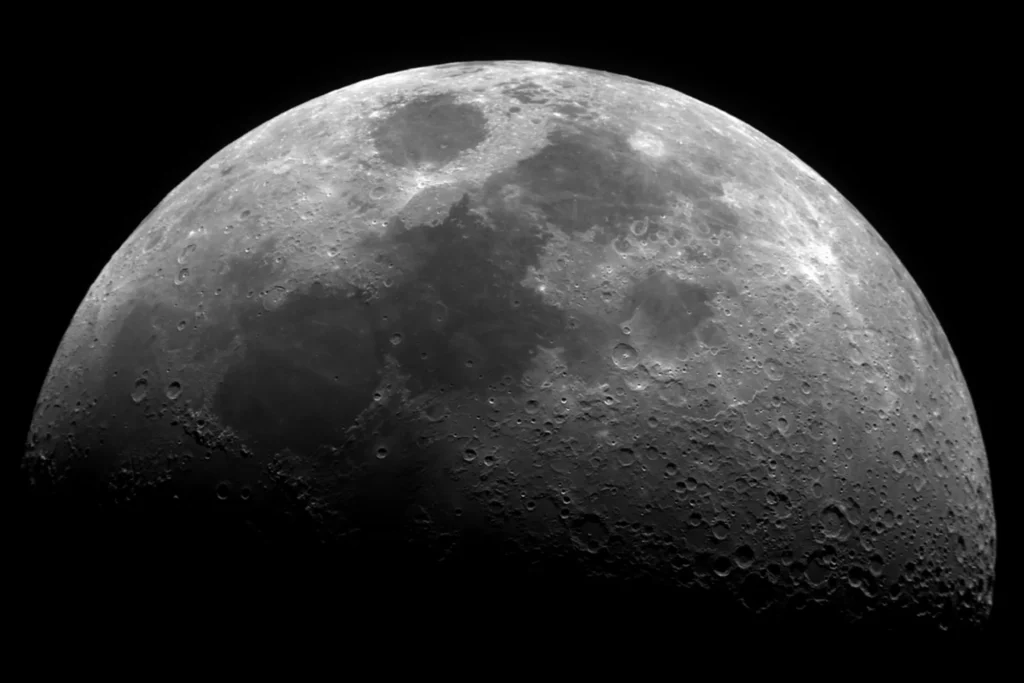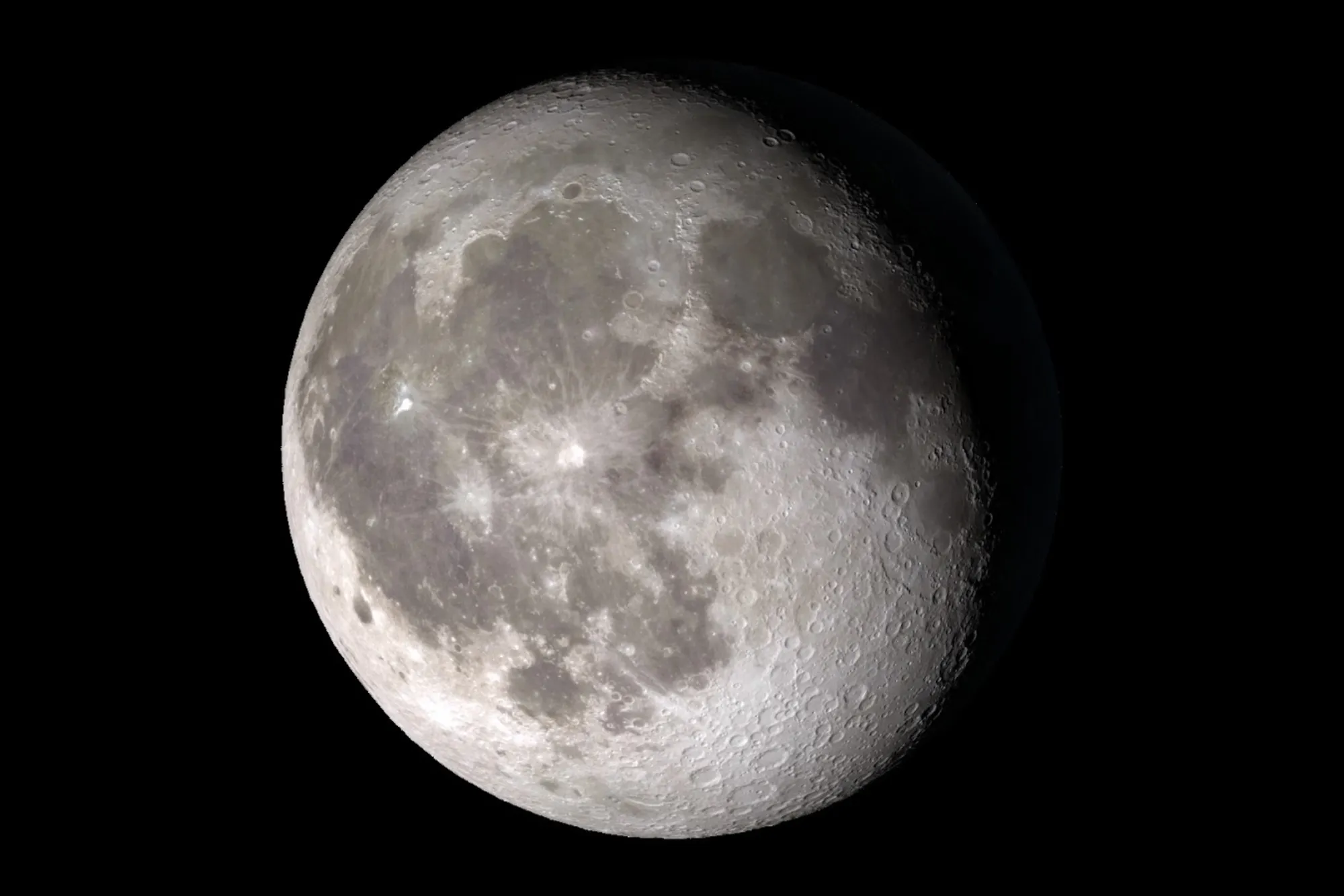The Moon has long been a source of intrigue for scientists, astronomers, and humanity as a whole. Its mysterious presence in the night sky has led to countless questions about its origins. Among the most pressing of these is the question, “Where did the Moon come from?” While many theories have been proposed over the years, modern scientific understanding has narrowed the possibilities. This article will explore the most widely accepted theories and the evidence supporting them, offering a comprehensive look at the Moon’s formation.
Theories About the Moon’s Formation
To understand where the Moon came from, it’s important to explore the various theories that have been proposed over time. Each theory seeks to explain how the Moon was formed and why it is so similar to Earth in some respects, yet distinct in others.
The primary theories that dominate the scientific discourse are the Giant Impact Hypothesis, the Fission Theory, the Capture Theory, and the Co-formation Theory. Each of these theories presents a different perspective on the Moon’s origin.
The Giant Impact Hypothesis
The Giant Impact Hypothesis is currently the most widely accepted theory about the Moon’s formation. According to this theory, the Moon was created from the debris that resulted from a catastrophic collision between the early Earth and a Mars-sized body, often referred to as Theia.
This event is believed to have occurred around 4.5 billion years ago, shortly after the formation of the Earth. The impact caused a significant portion of Earth’s outer layer to be ejected into space, where it eventually coalesced into the Moon.
The evidence supporting this theory is compelling. The Moon’s isotopic composition closely matches that of Earth’s, suggesting that the material that formed the Moon came from Earth. Furthermore, the Earth-Moon system’s high angular momentum aligns with what we would expect from a giant impact.
The size, mass, and orbit of the Moon also fit with the idea that it was once part of Earth and was ejected due to the collision. The Giant Impact Hypothesis explains many of the characteristics of the Moon and Earth’s relationship, including their similar compositions and the angular momentum of the system.
The Fission Theory
The Fission Theory suggests that the Moon was once part of Earth and was ejected into space due to the planet’s rapid rotation. According to this theory, in the early stages of Earth’s history, the planet rotated so quickly that centrifugal forces caused a chunk of it to break off. This chunk then formed the Moon.
However, there are significant challenges to this theory. First, there is no clear evidence to support the idea that Earth’s rotation was ever fast enough to cause such an event. Additionally, the composition of the Moon doesn’t fully support the fission theory.
If the Moon were once part of Earth, it would likely have a similar composition, particularly in terms of iron content, to Earth’s core. Instead, the Moon is relatively poor in iron, which doesn’t align with what would be expected from a body that was once part of Earth’s inner layers.
The Capture Theory
The Capture Theory proposes that the Moon was not formed in the same location as Earth, but was instead a rogue body that was captured by Earth’s gravitational field. According to this theory, the Moon was originally formed elsewhere in the solar system and, after a close encounter with Earth, was pulled into orbit around our planet.
While this theory has its appeal, it faces several challenges. The most significant of these is the question of how such a large body could be captured by Earth’s gravity. The Moon’s orbit is also nearly circular, which makes it unlikely that it was captured by a passing gravitational field. In addition, capturing a body of the Moon’s size would require very specific conditions, and there is no evidence to suggest that such conditions were present at the time.
The Co-formation Theory
The Co-formation Theory suggests that the Moon and Earth formed together at the same time from the same primordial disk of gas and dust that surrounded the early Sun. According to this theory, the Moon was never part of Earth, nor was it captured from another part of the solar system. Instead, Earth and the Moon formed side by side, gradually accumulating material from the same cosmic dust cloud.
While this theory is plausible in some respects, it doesn’t explain some of the more peculiar characteristics of the Moon. For example, the Moon is relatively poor in iron, which suggests that it didn’t form from the same material as Earth’s core. Additionally, the isotopic differences between Earth and the Moon are more consistent with the Giant Impact Hypothesis, which suggests that the Moon was formed from debris rather than from the same primordial disk.
Why Is the Moon So Similar to Earth?

One of the most striking features of the Moon is its similarity to Earth in certain respects. The isotopic composition of the Moon’s rocks is remarkably similar to that of Earth’s, especially when compared to other objects in the solar system.
This has led scientists to believe that the Moon may have formed from material that was once part of Earth. The Moon also shares some geological features with Earth, such as maria, large, dark plains of basalt rock that suggest volcanic activity in the Moon’s past.
Despite these similarities, the Moon is also quite different from Earth in several key ways. The Moon has no atmosphere, which means it cannot support life as we know it. Its surface is covered in craters, a result of constant bombardment by meteoroids. These differences provide important clues about the Moon’s history and its relationship with Earth.
The Moon’s Impact on Earth
The formation of the Moon had a significant impact on Earth. The Moon’s gravitational pull plays a crucial role in stabilizing Earth’s axial tilt, which in turn helps to maintain a relatively stable climate. Without the Moon, Earth’s tilt could fluctuate wildly, leading to extreme changes in climate over long periods of time.
The Moon’s gravitational pull also causes tides on Earth, which have influenced the evolution of life in the oceans. The interaction between Earth and the Moon has had profound effects on both bodies, shaping their geological and biological histories.
The Role of Space Missions in Understanding the Moon

The exploration of the Moon has provided invaluable insights into its origins and characteristics. The Apollo missions, which took place between 1969 and 1972, brought back lunar rock samples that have been studied extensively by scientists. These samples have provided crucial evidence that supports the Giant Impact Hypothesis, as well as helping to refine our understanding of the Moon’s composition and history.
In recent years, space agencies like NASA, the European Space Agency (ESA), and China’s CNSA have continued to study the Moon through unmanned missions. These missions aim to learn more about the Moon’s surface, its potential resources, and its history. The growing interest in lunar exploration could provide further insights into where the Moon came from and how it formed.
Table: Key Theories About the Moon’s Formation
| Theory | Explanation | Strengths | Weaknesses |
|---|---|---|---|
| Giant Impact Hypothesis | Moon formed from debris after a collision between Earth and Theia | Strong isotopic evidence, high angular momentum | Requires a large collision event |
| Fission Theory | Moon was once part of Earth and ejected due to rapid rotation | Suggests Earth-Moon connection | Lack of physical evidence, Moon’s composition doesn’t fit |
| Capture Theory | Moon was captured by Earth’s gravity from elsewhere in the solar system | Explains Moon’s orbit | Difficult to explain how such a capture could happen |
| Co-formation Theory | Moon and Earth formed together from the same primordial disk | Suggests simultaneous formation | Moon’s iron content doesn’t match Earth’s |
FAQs
1. What is the most widely accepted theory about the Moon’s formation?
The most widely accepted theory is the Giant Impact Hypothesis, which suggests that the Moon formed from debris ejected after a collision between Earth and a Mars-sized body called Theia.
2. Why does the Moon have a similar composition to Earth?
The Moon’s composition is similar to Earth’s, especially in terms of isotopic ratios, which supports the idea that it formed from material that was once part of Earth.
3. How does the Moon affect life on Earth?
The Moon’s gravitational pull stabilizes Earth’s axial tilt and causes tides, both of which have had significant effects on Earth’s climate and the development of life.
4. How did the Apollo missions help us understand the Moon’s origin?
The Apollo missions brought back lunar rock samples, which provided crucial evidence supporting the Giant Impact Hypothesis and helped refine our understanding of the Moon’s composition.
5. Will future space missions provide more information about the Moon’s origins?
Yes, ongoing and future space missions, including those by NASA and other space agencies, will continue to study the Moon and may provide more insights into its formation and history.











